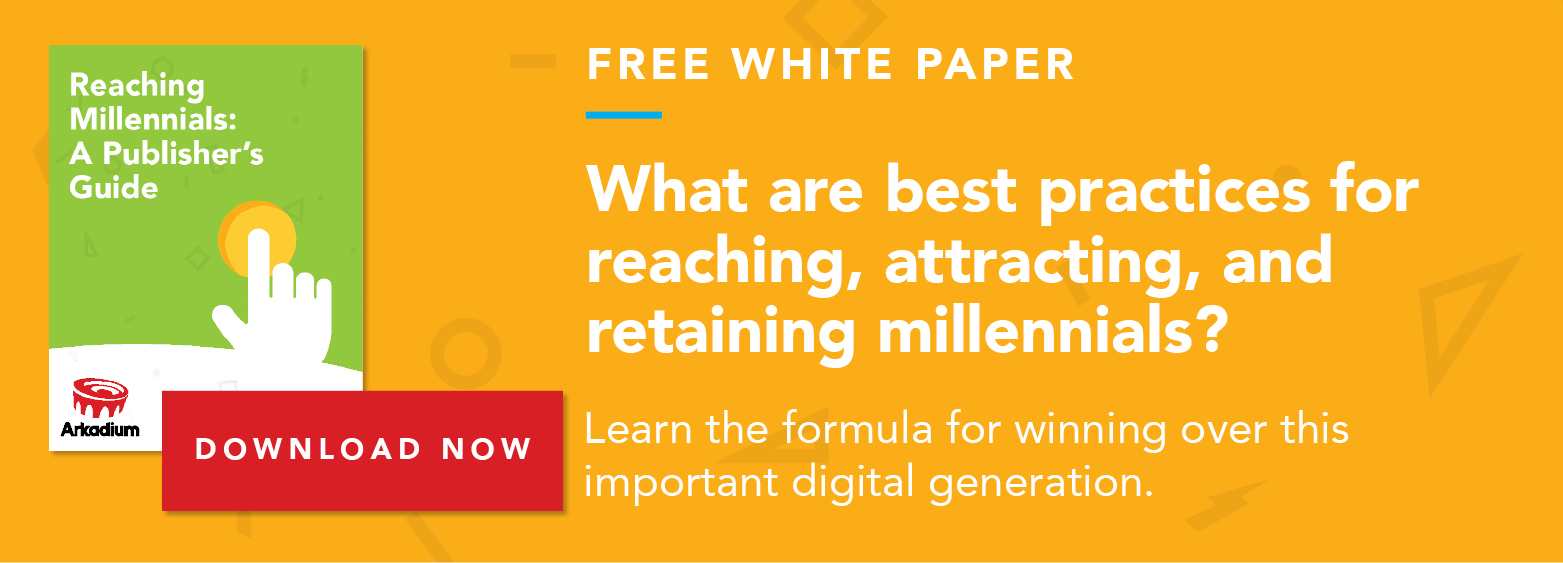How Publishers are Using Technology to Innovate the Newsroom

Earlier in March, we hosted a panel discussion on innovation in the newsroom.
Panelist Eric Gertler — Co-Chairman of both the New York Daily News and U.S. News & World Report — asserted, “There’s a lot of things going on, that weren’t there 5-10 years ago, that make the newsroom more efficient.”1
Gertler is referring to new advancements in editorial and publishing technologies.
What’s more, digital publishers are quickly realizing that these new technologies are also promising tools to boost user engagement.
Artificial Intelligence
The applications for artificial intelligence (AI) seem to be limitless, as digital publishers leverage the power of AI and machine learning for a variety of tasks.
After Tronc rebranded in 2016, chairman Michael Ferro noted how important AI would be in content personalization.
“Our transformation strategy… is focused on leveraging artificial intelligence and machine learning to improve the user experience and better monetize our world-class content in order to deliver personalized content to our 60 million monthly users and drive value for all of our stakeholders,” he said.2
Considering business2community.com conducted a study that revealed 39% of consumers won’t spend time with a publisher, or engage with media content if it’s not personally relevant to their interests3 , Tronc’s focus on AI’s content personalization capabilities seems more than worthwhile.
Additionally, the Associated Press (AP) introduced AI to their newsroom to aide in the production of quarterly earnings reports. The publication estimates that they are able to increase production from 300 to 3,000 reports per quarter thanks to AI technology.4
Learn three other reasons why content personalization is a must.
Similarly, the L.A. Times, Yahoo Sports, and Forbes magazine use automation to generate news articles more efficiently.5
Some innovative publishers are even turning to dynamic editorial – which uses artificial intelligence to automatically enhance an article with engaging content – to not only effectively scale content creation but also boost engagement. For example, Sports Illustrated implemented automated and contextual interactive data visualizations in late 2016; resulting in a 100-percent increase in session duration.
Chatbots
Digital publishers are also using chatbots — fueled by AI technology — to curate content by communicating directly with readers.
In 2016, TechCrunch announced the launch of a cross-platform and personalized news recommendations bot on Facebook Messenger.6
Chatbots that use messaging interfaces provide users a platform to interact with, resulting in a more relevant user experience.
Although, TechCrunch won’t share user data, Travis Bernard, director of audience development, said subscribers and the number of active sessions doubled from May to June.7
TechCrunch, is not alone in launching chatbots for messenger apps.
In fact, CNN, Business Insider, and the Washington Post have all built chatbots in an effort to engage readership on messaging platforms.8
Virtual Reality
And, if content personalization, automated content creation, and news curation weren’t enough, digital publishers are putting their audiences at the heart of interactive storytelling with VR.
According to a joint YuMe/Nielsen study, audiences engage with VR content 34% longer than other content forms.9
What’s more, publishers like the The New York Times have found success engaging readers with their VR app.
“We’ve had more than 500,000 downloads of the app, the engagement has been astonishing,” boasts Times’ C.E.O., Mark Thompson.
Outside of the Times, Conde Nast will be releasing a six-episode scripted series for Samsung Gear VR. While, Hearst and Time Inc. have announced VR projects for Cosmopolitan, and Sports Illustrated, respectively.10
Indeed, technological advancements are pushing digital newsrooms toward a future of automation, engagement, and virtual reality.
1. How Digital Publishers Are Innovating The Newsroom. New York, New York. 15 Mar. 2017. Panel.
2. Rebrand, The. “Tribune Publishing rebrands as Tronc amid Gannett takeover bid.” CNNMoney. Cable News Network, n.d. Web. 03 Apr. 2017.
3. Durman, Tyler. “Why Not Having a Content Personalization Strategy Isn’t an Option.” Business 2 Community. N.p., 24 Jan. 2017. Web. 17 Feb. 2017.
4. Miller, Ross. “AP’s ‘robot journalists’ are writing their own stories now.” The Verge. The Verge, 29 Jan. 2015. Web. 03 Apr. 2017.
5. Eudes, Yves. “The journalists who never sleep.” The Guardian. Guardian News and Media, 12 Sept. 2014. Web. 03 Apr. 2017.
6. Bernard, Travis. “TechCrunch launches a personalized news recommendations bot on Facebook Messenger.” TechCrunch. TechCrunch, 19 Apr. 2016. Web. 03 Apr. 2017.
7. “How Fusion, Complex and other publishers are using Facebook Messenger bots.” Digiday. N.p., 21 June 2016. Web. 03 Apr. 2017.
8. Sloane, April 12 2016 by Garett. “Publishers rush to get their bots on Facebook Messenger.” Digiday. N.p., 13 Apr. 2016. Web. 03 Apr. 2017.
9. Adams, Peter. “Report: VR delivers big on engagement, emotional response.” Marketing Dive. N.p., 10 Nov. 2016. Web. 03 Apr. 2017.
10. Peterson, Becky. “Magazine Publishers Begin to Embrace Virtual Reality.” Folio:. Folio:, 14 July 2016. Web. 03 Apr. 2017.


